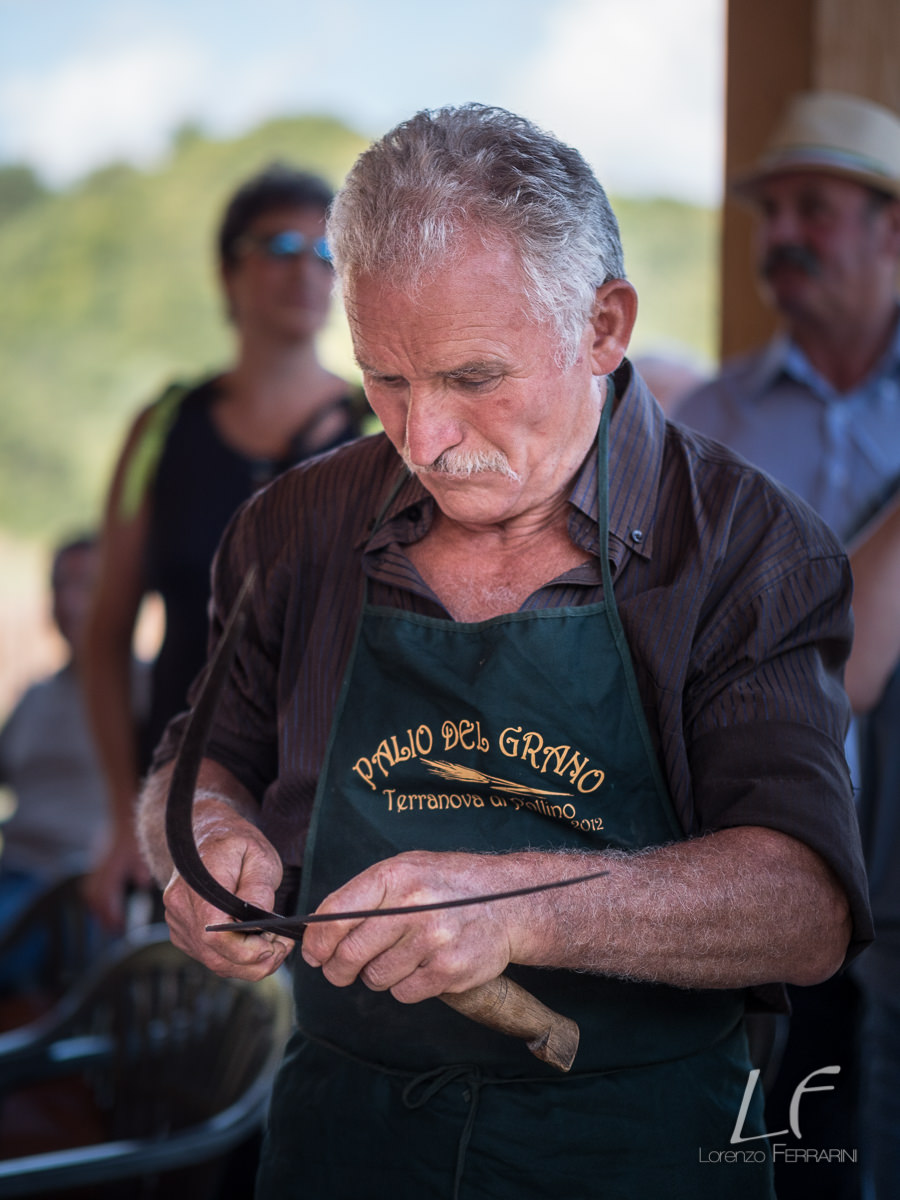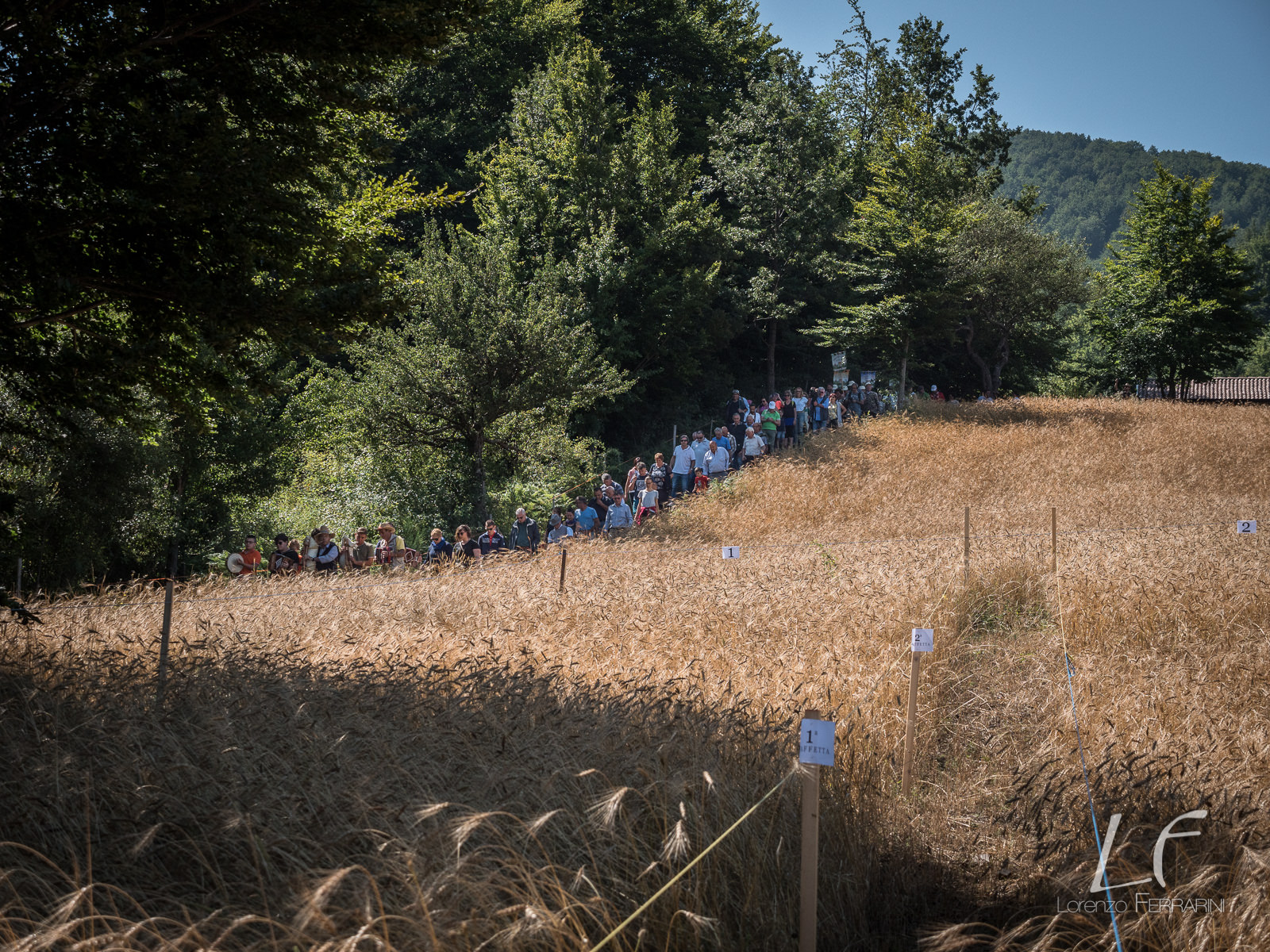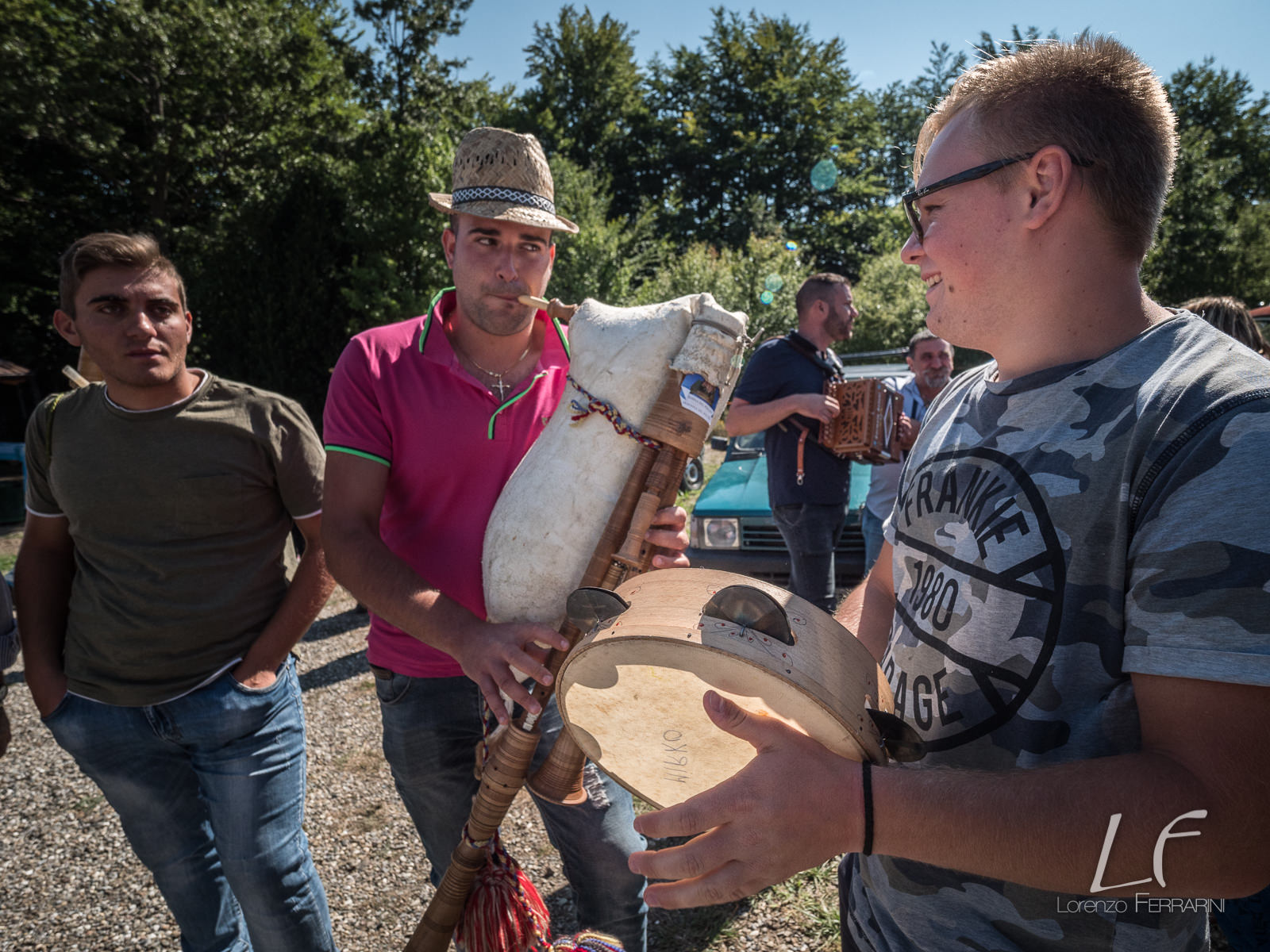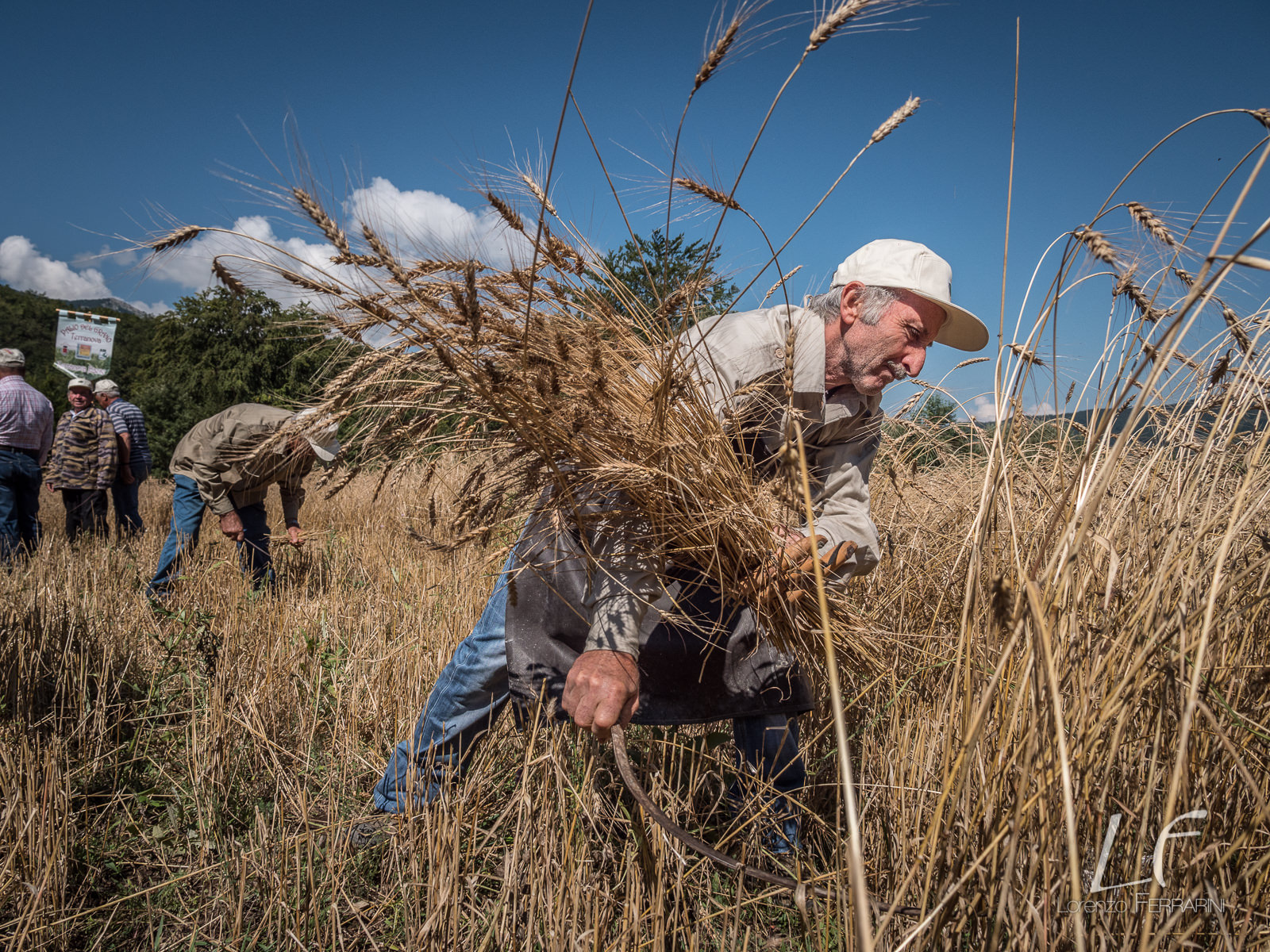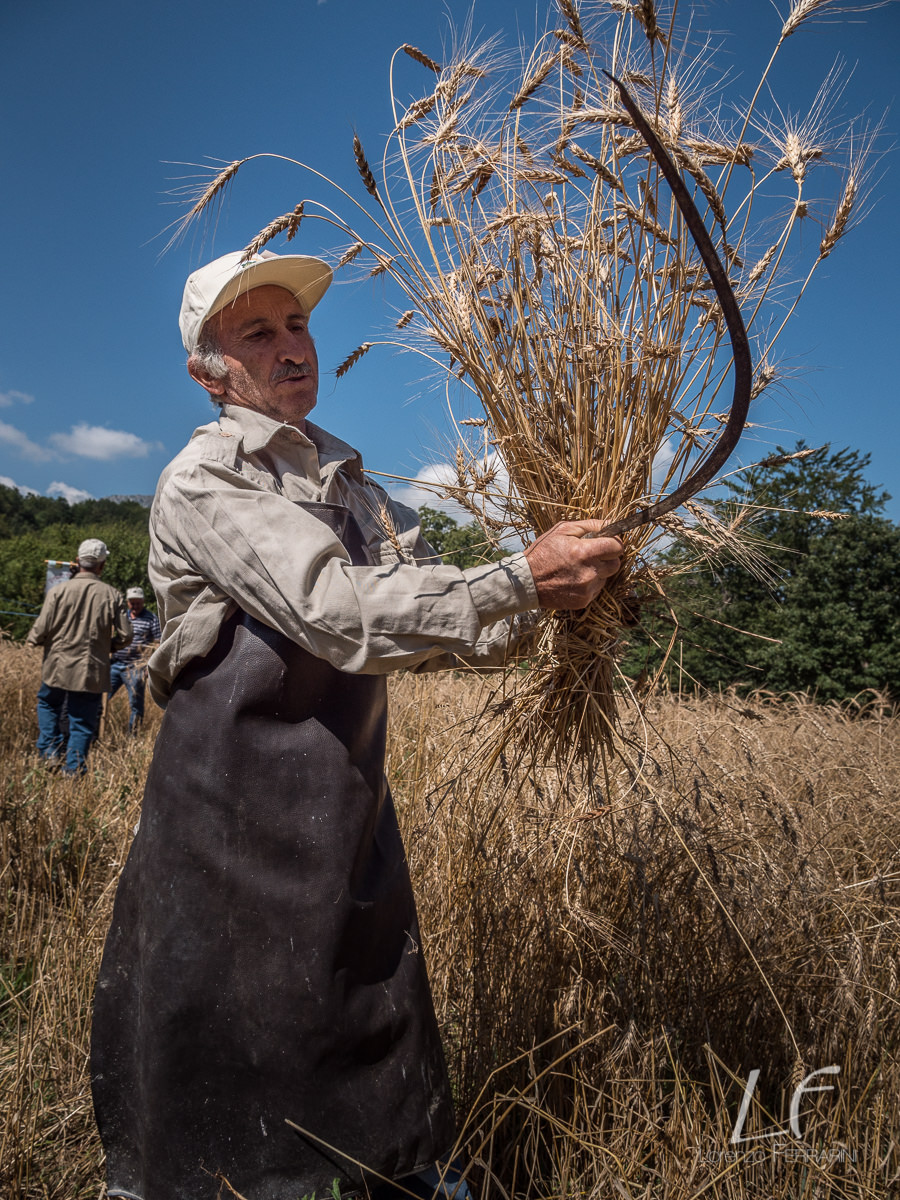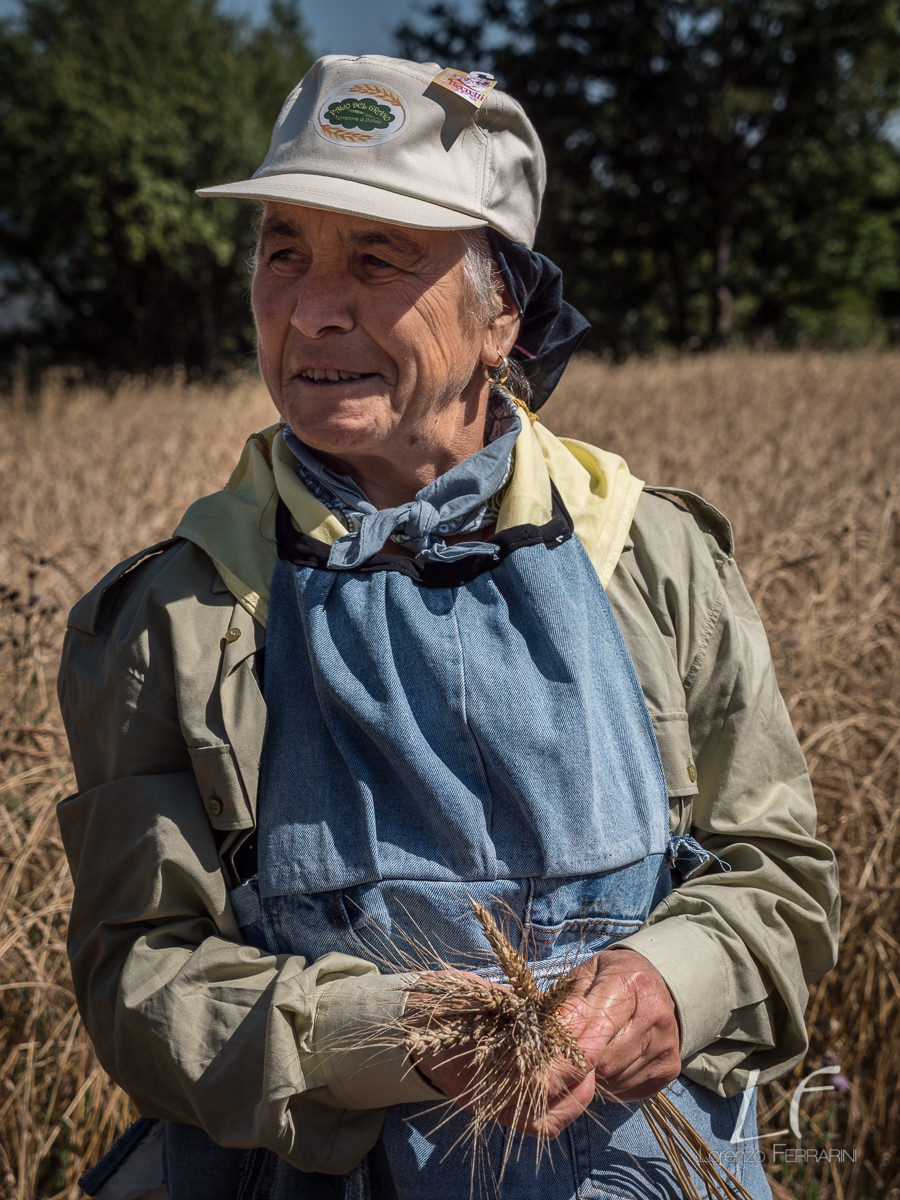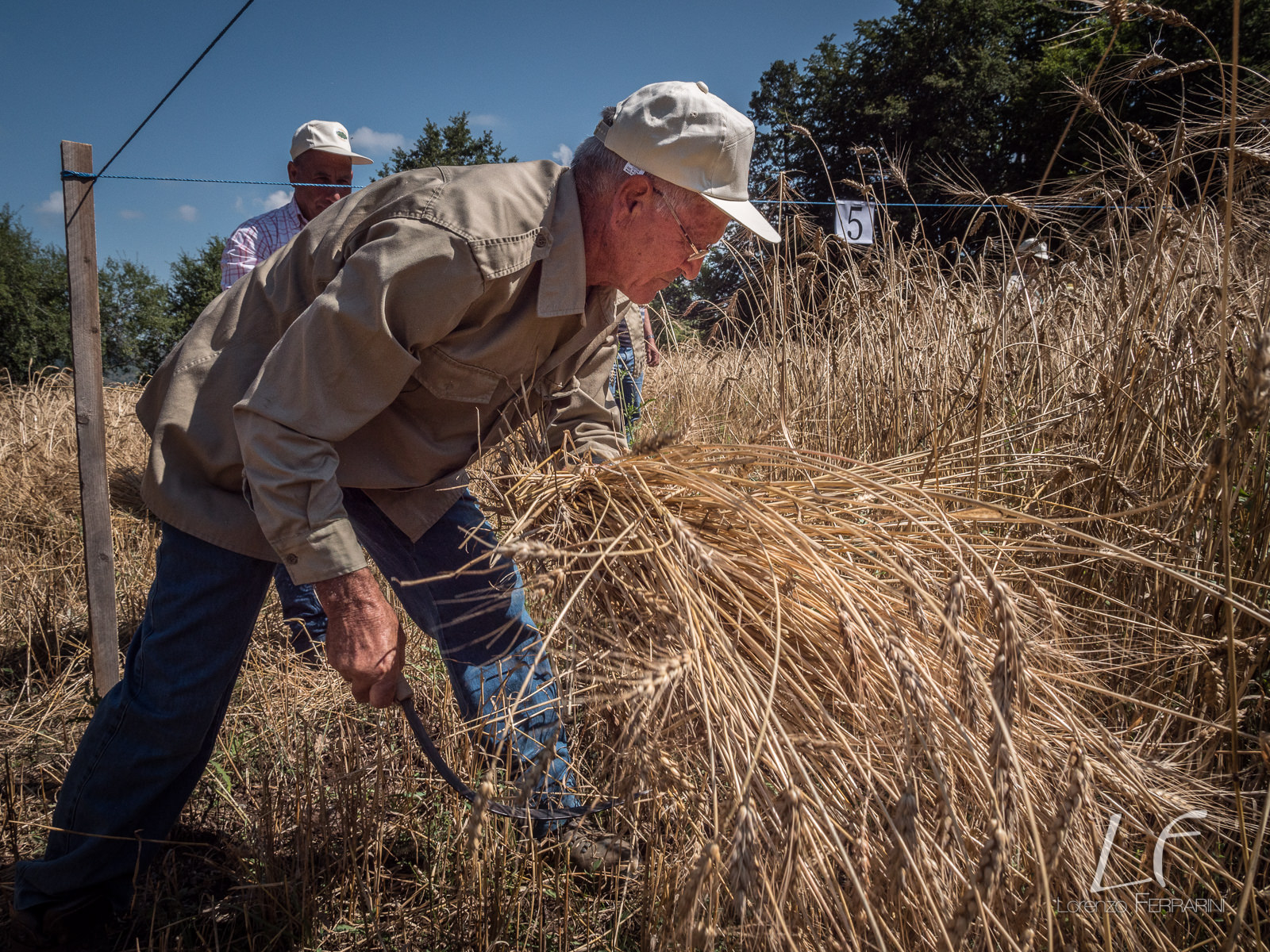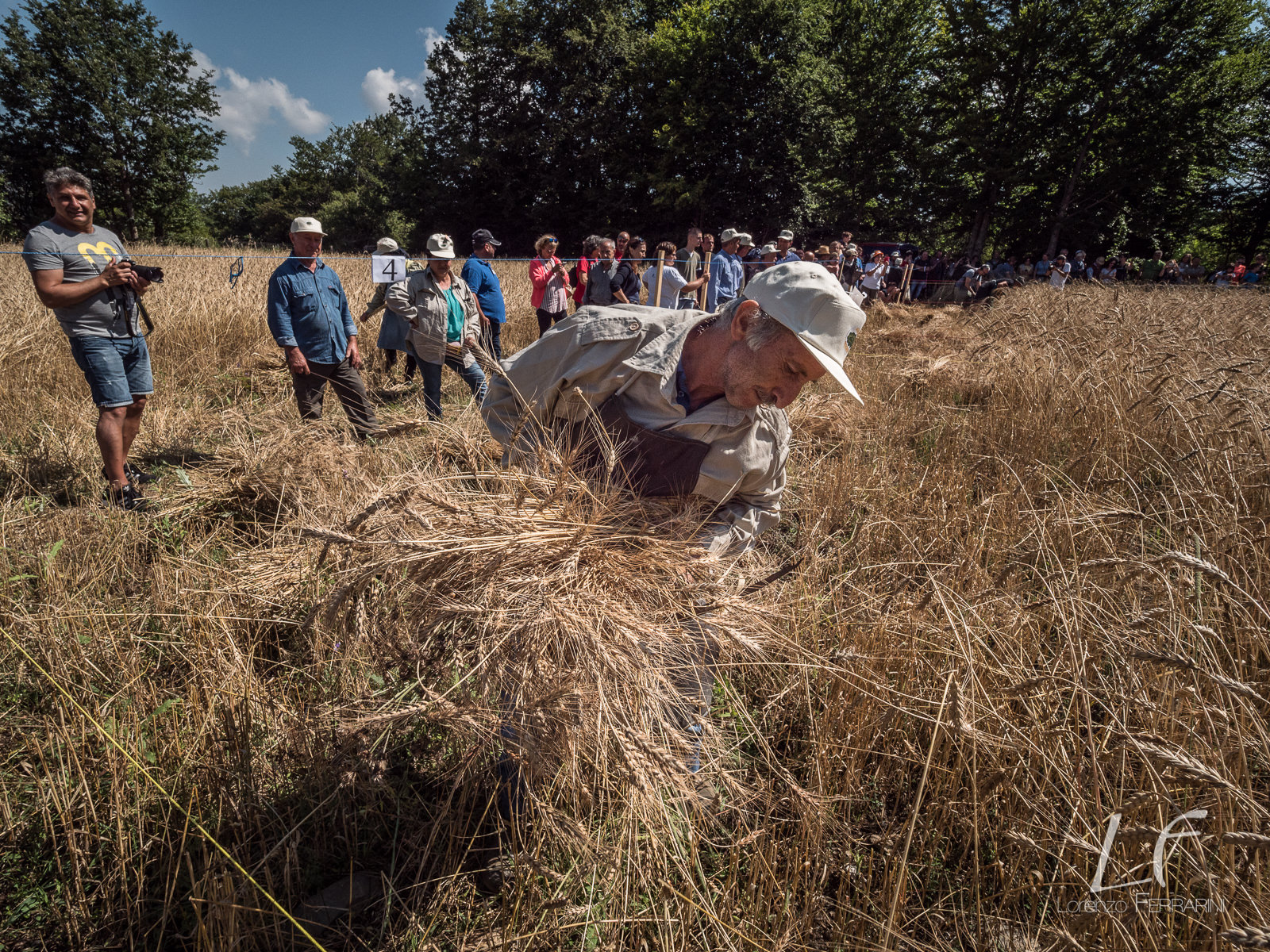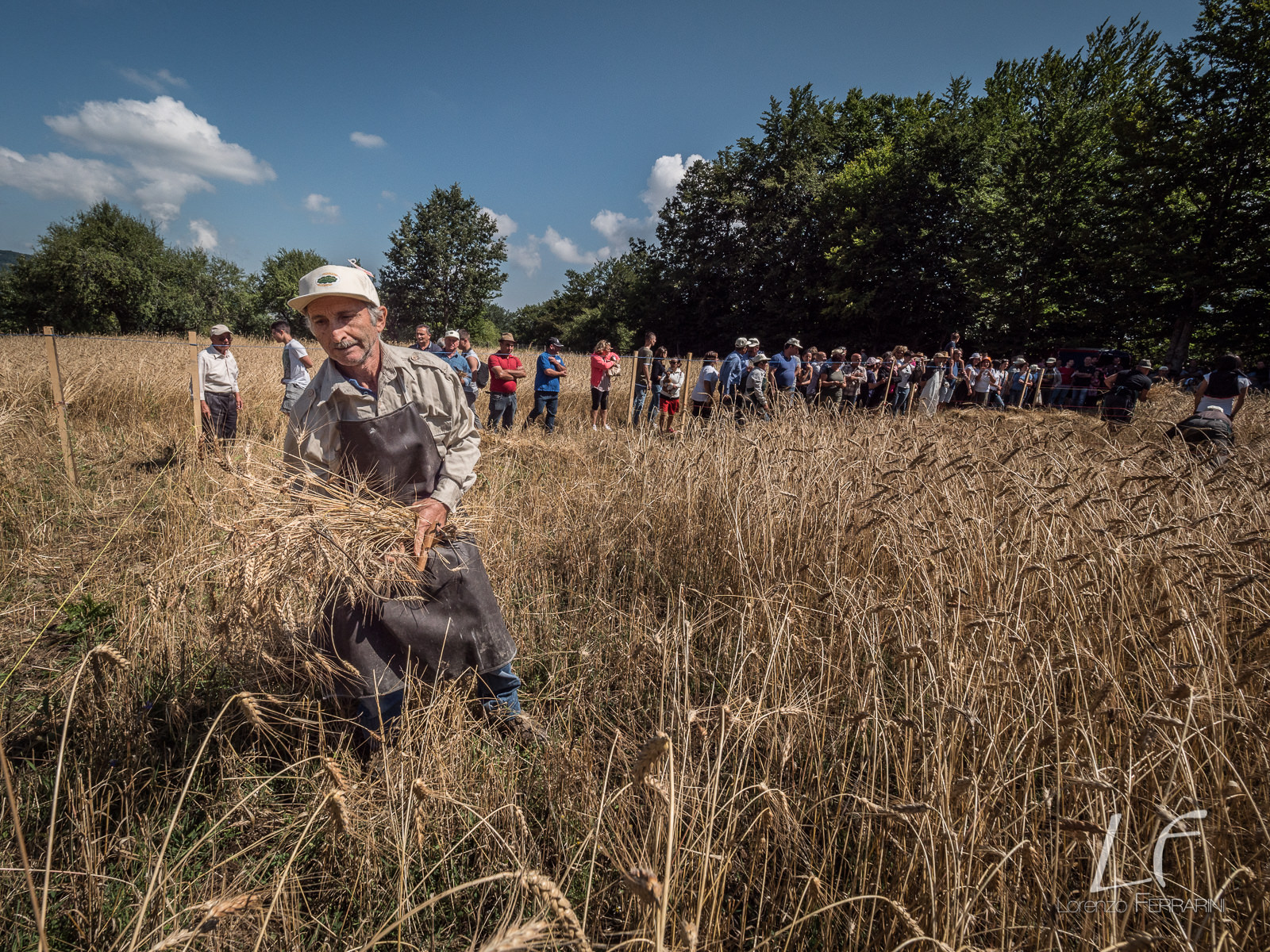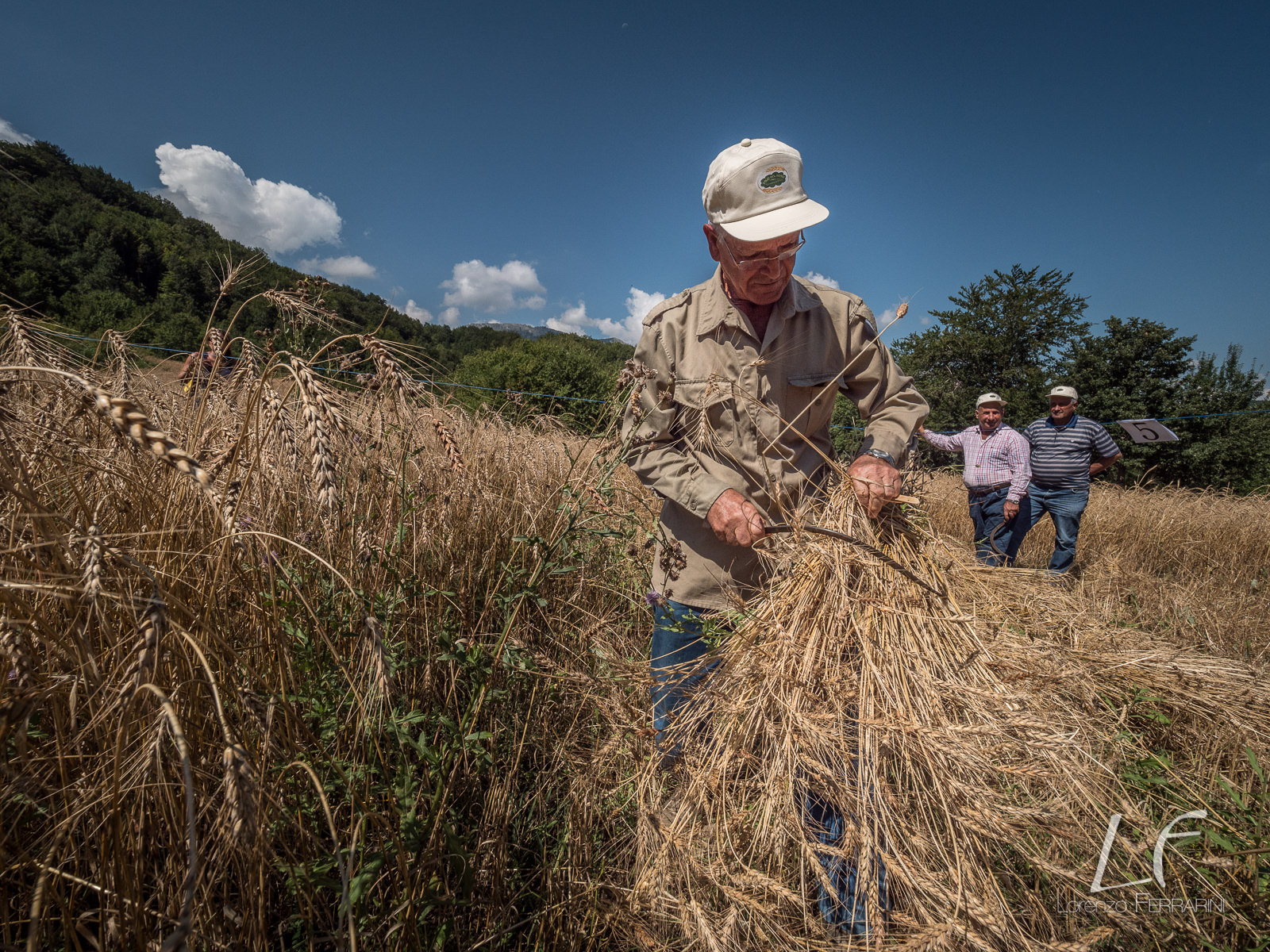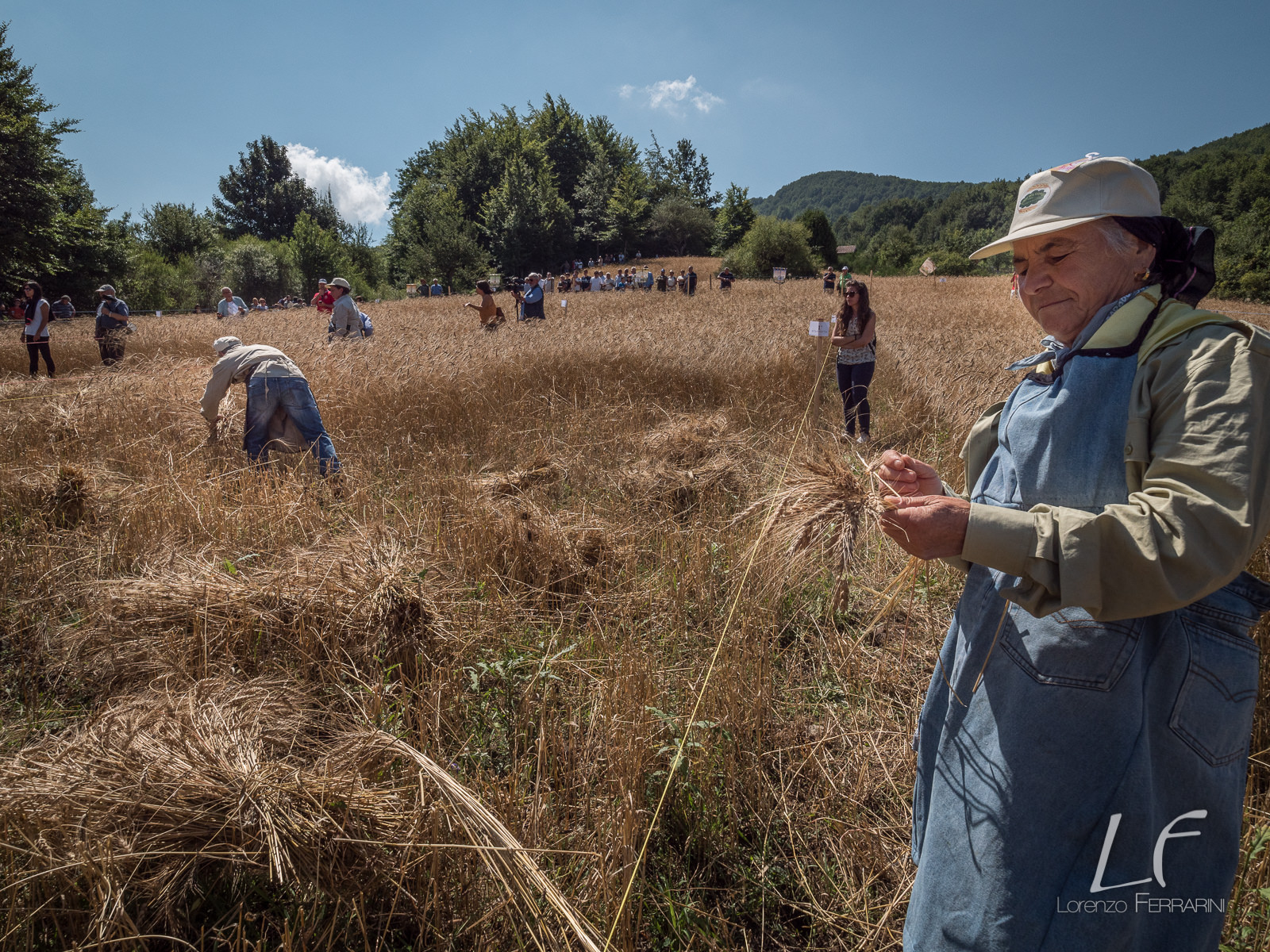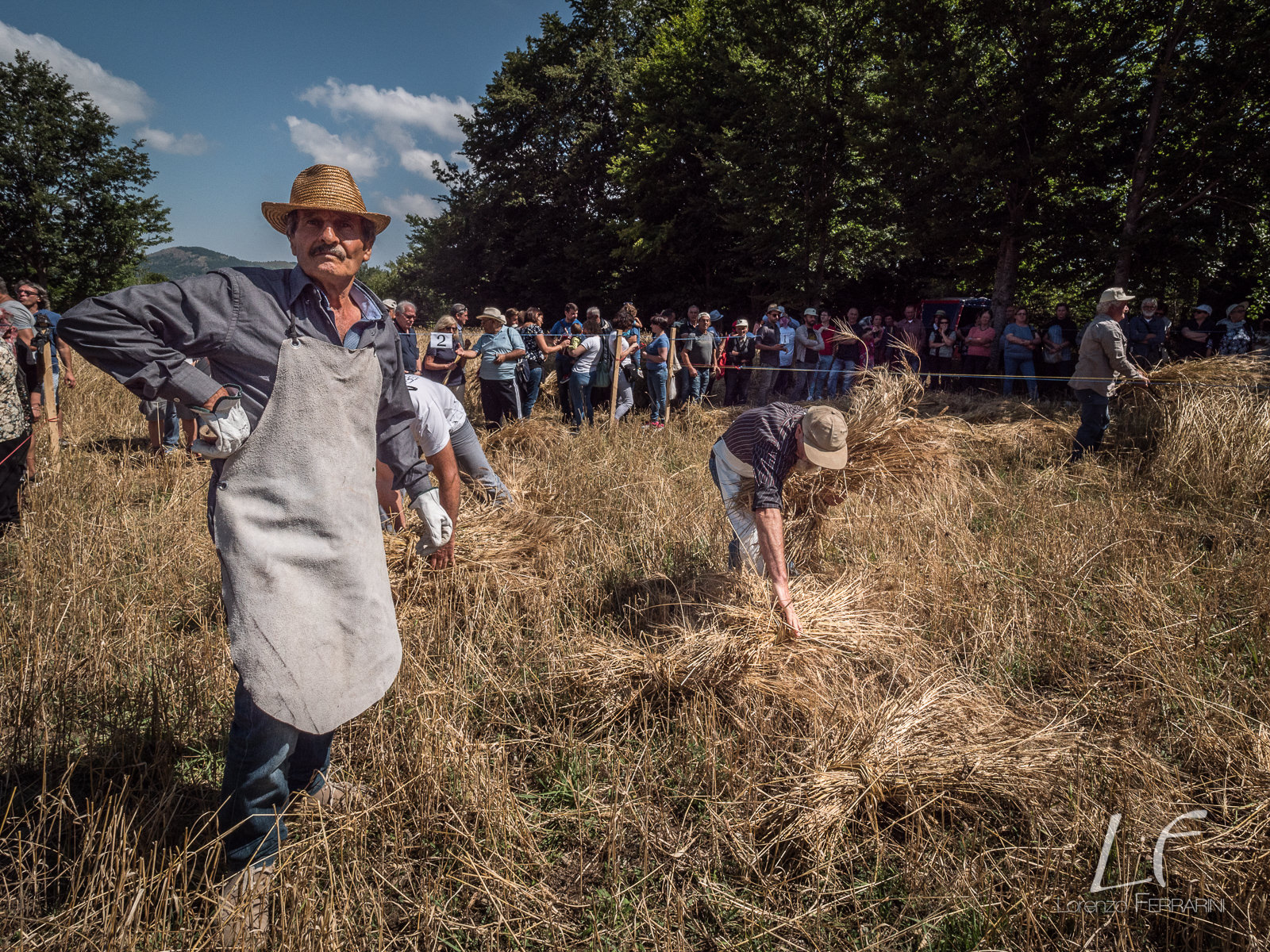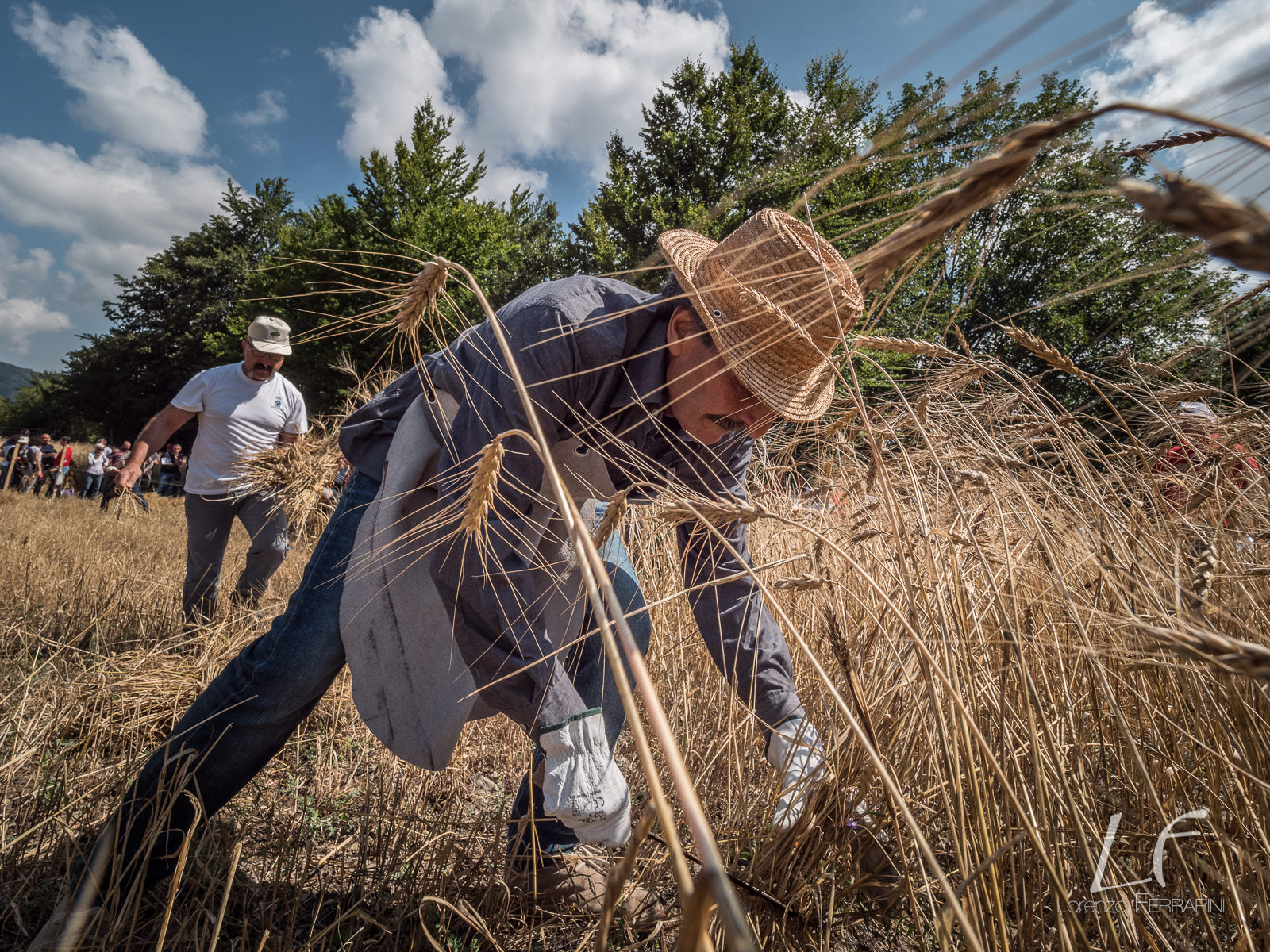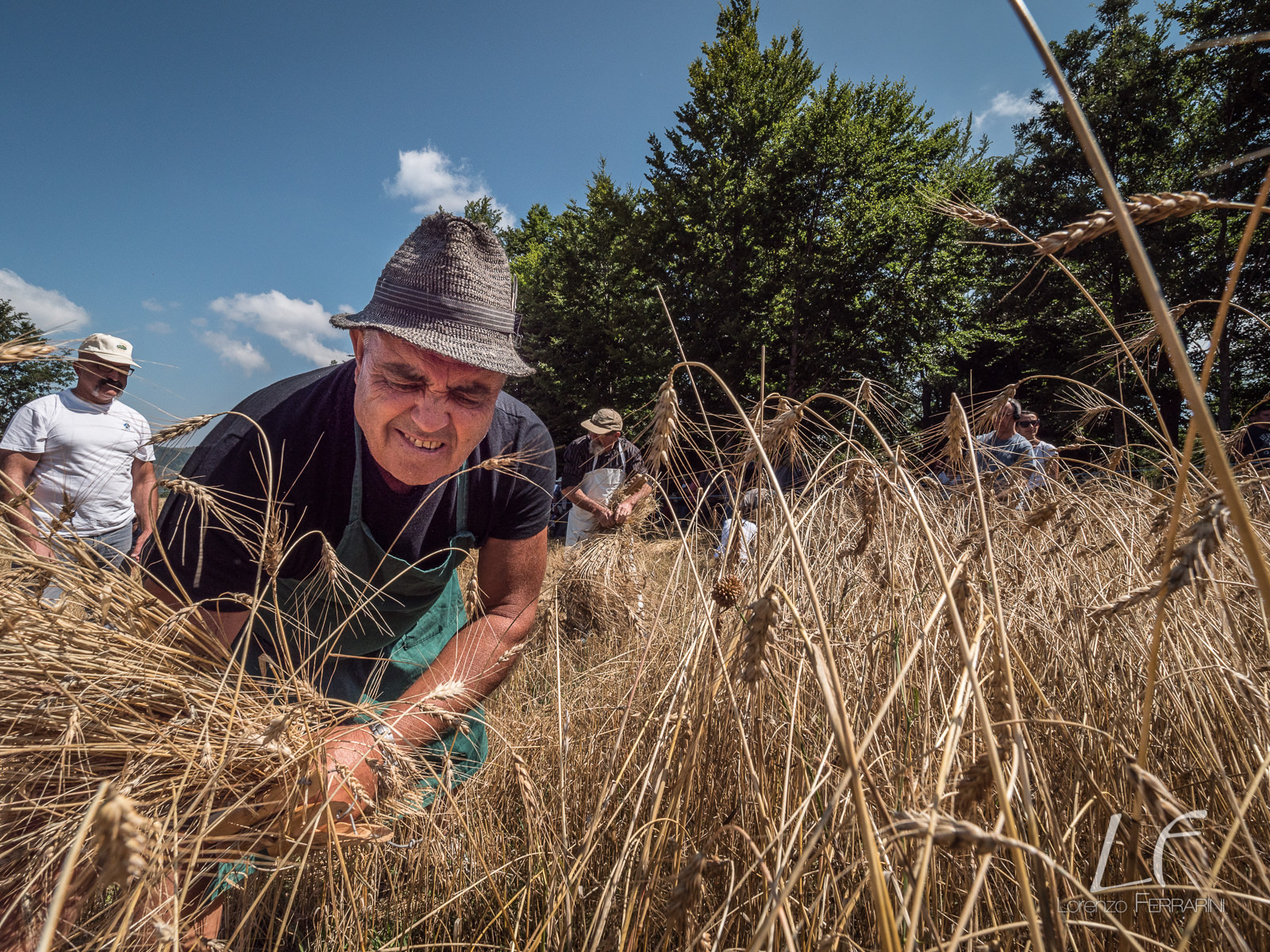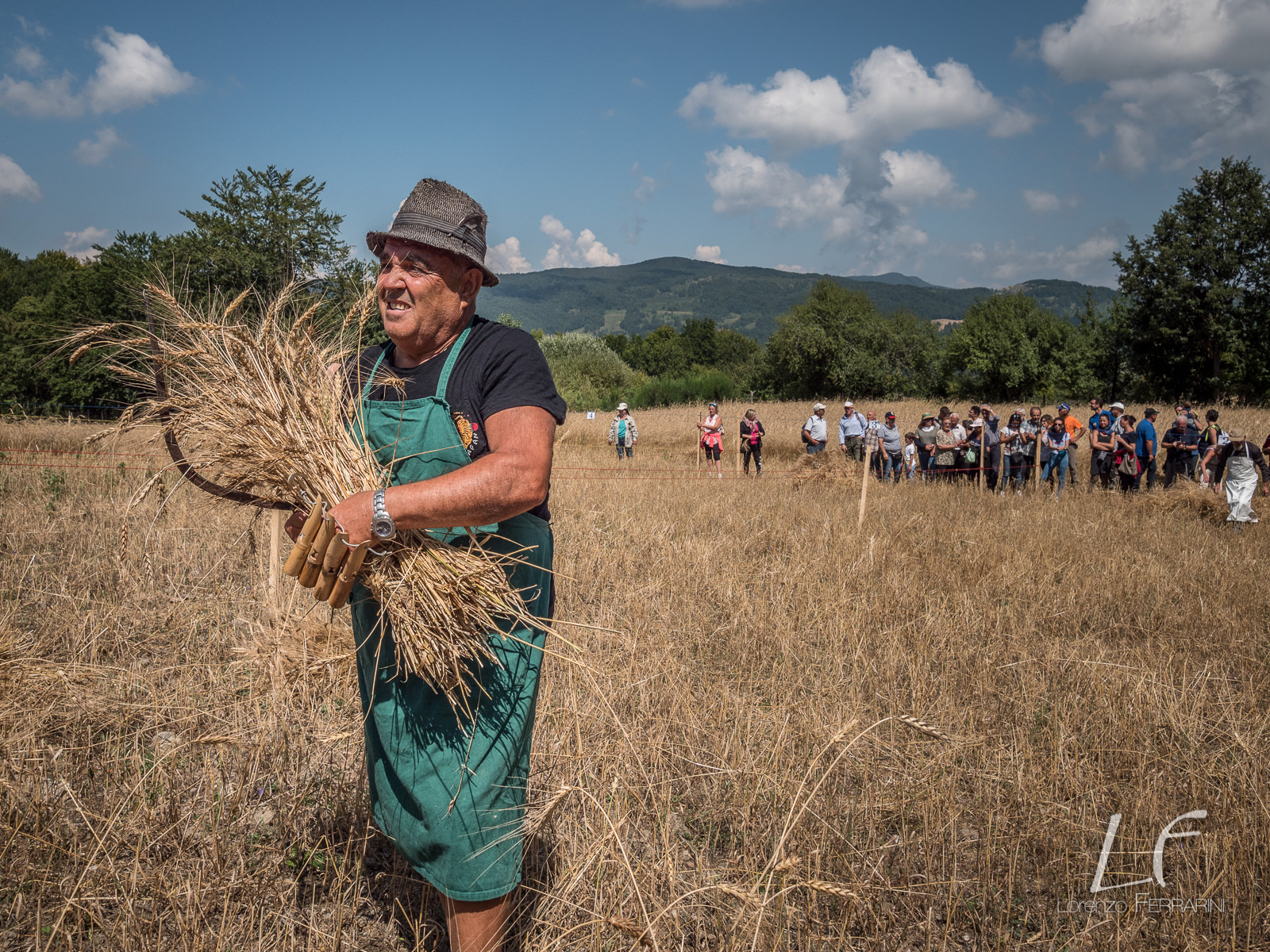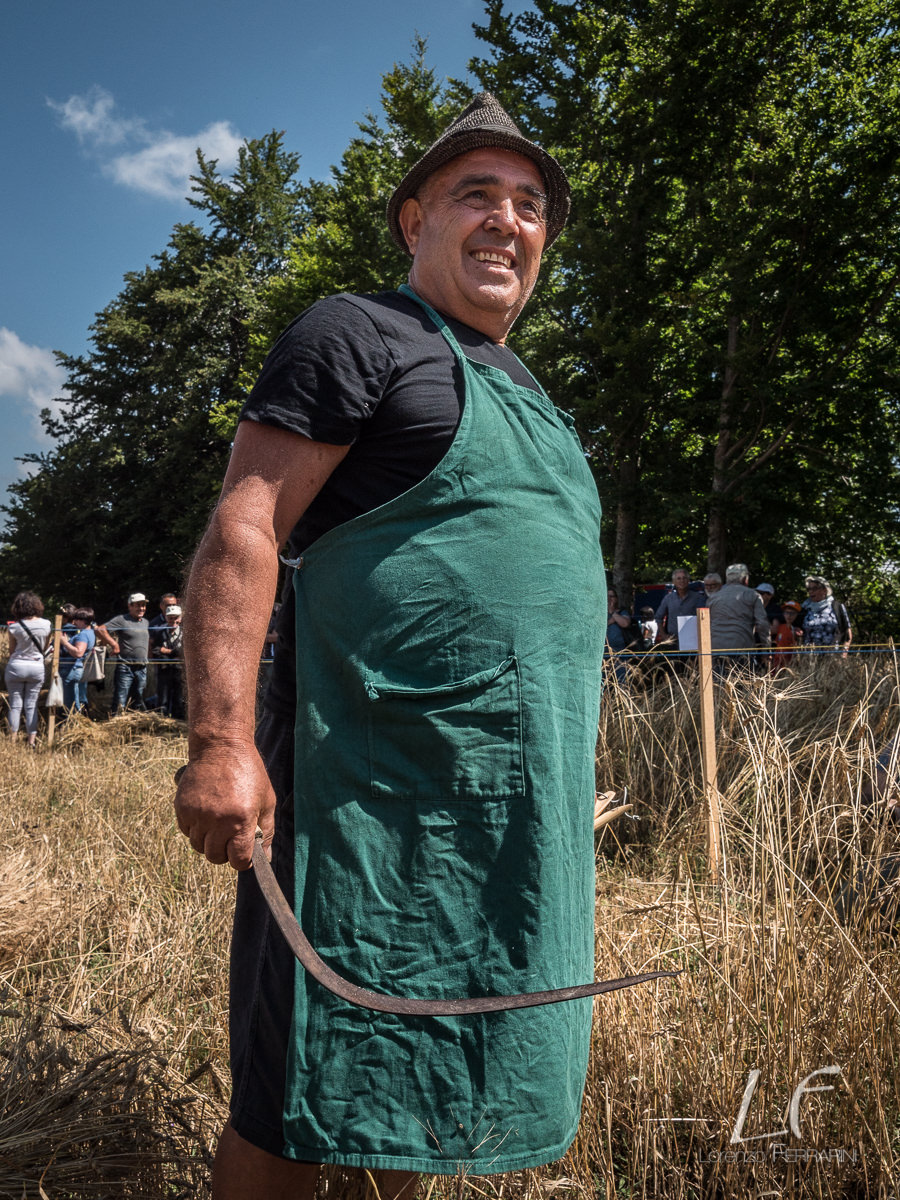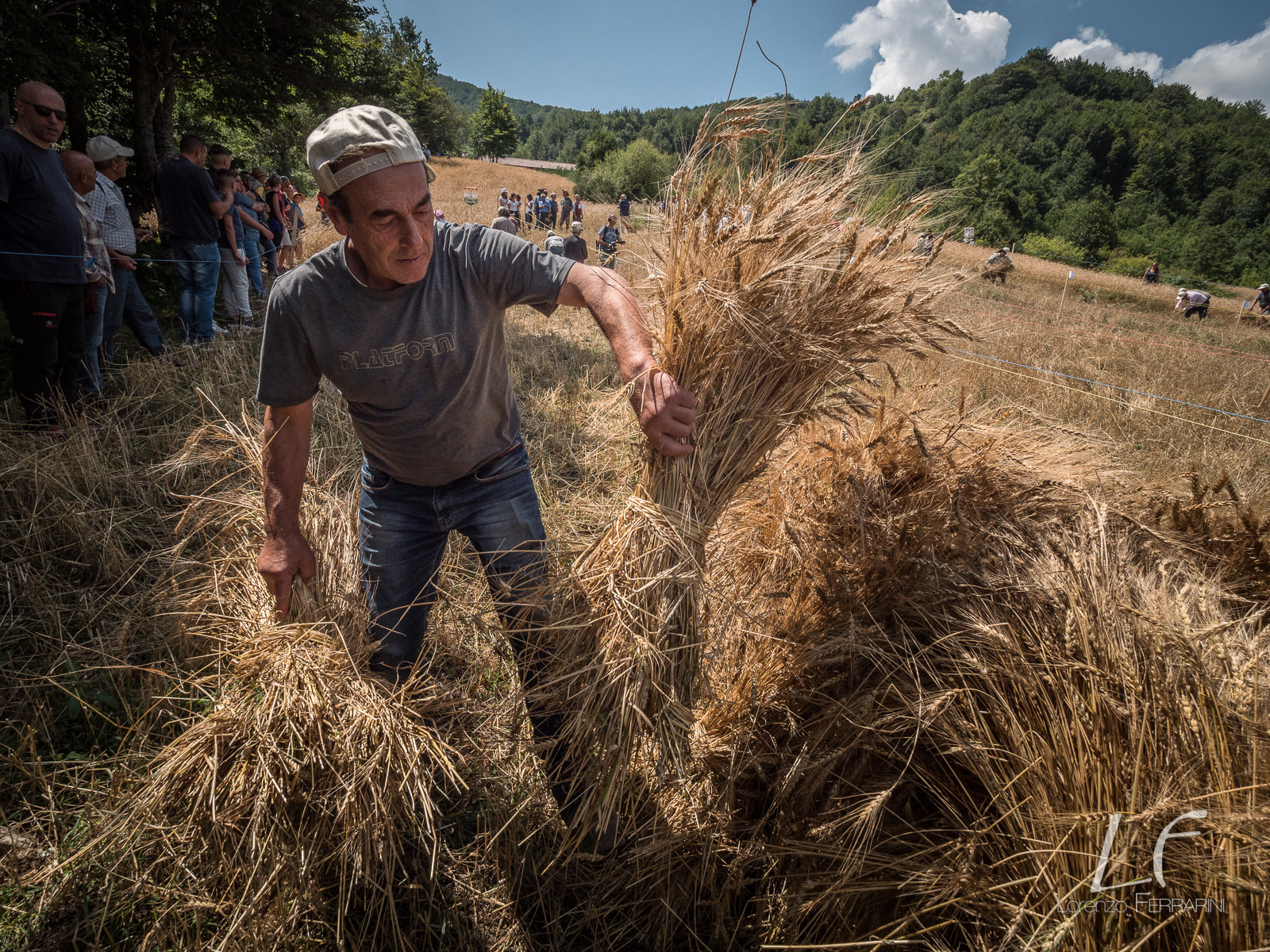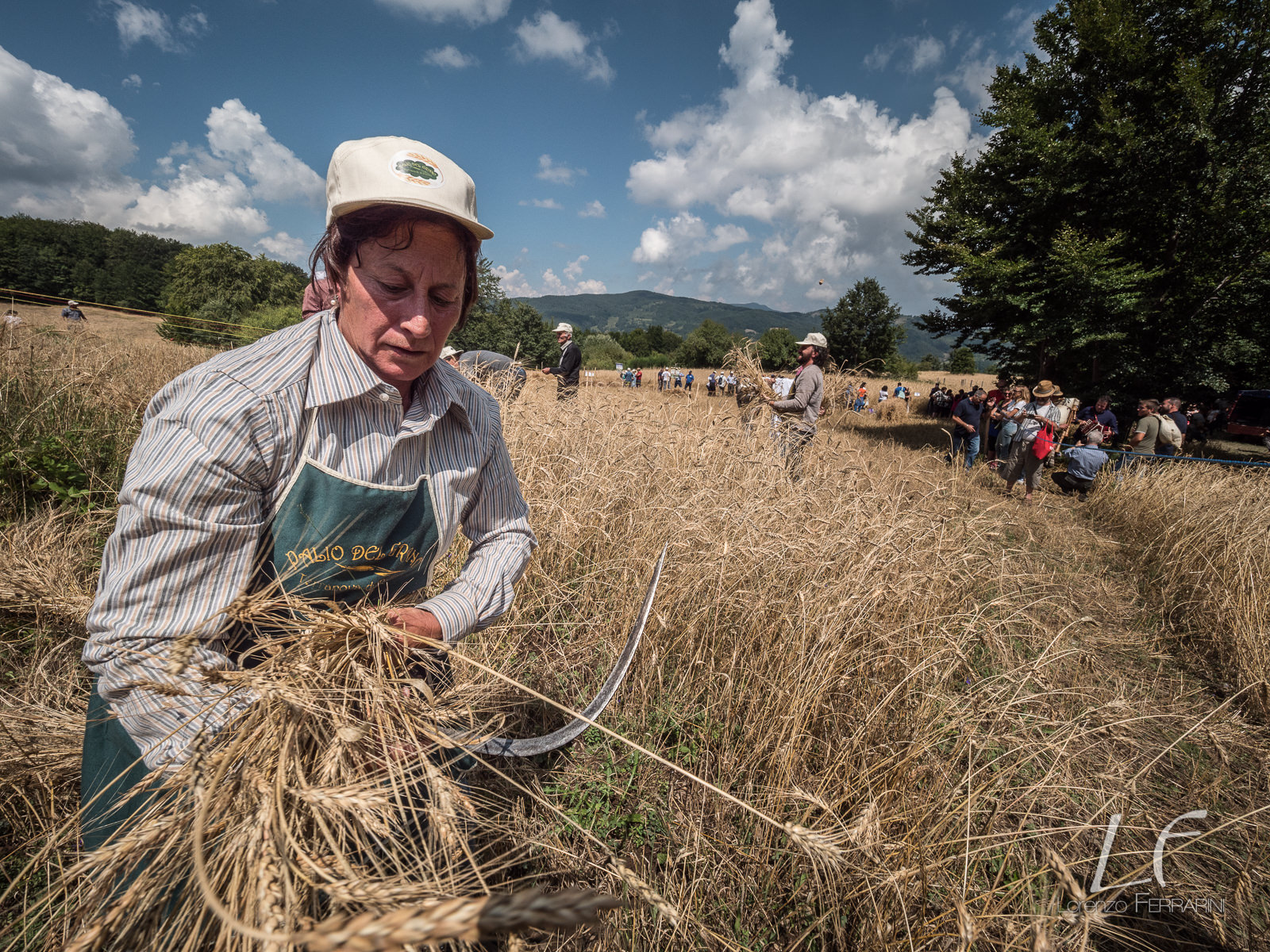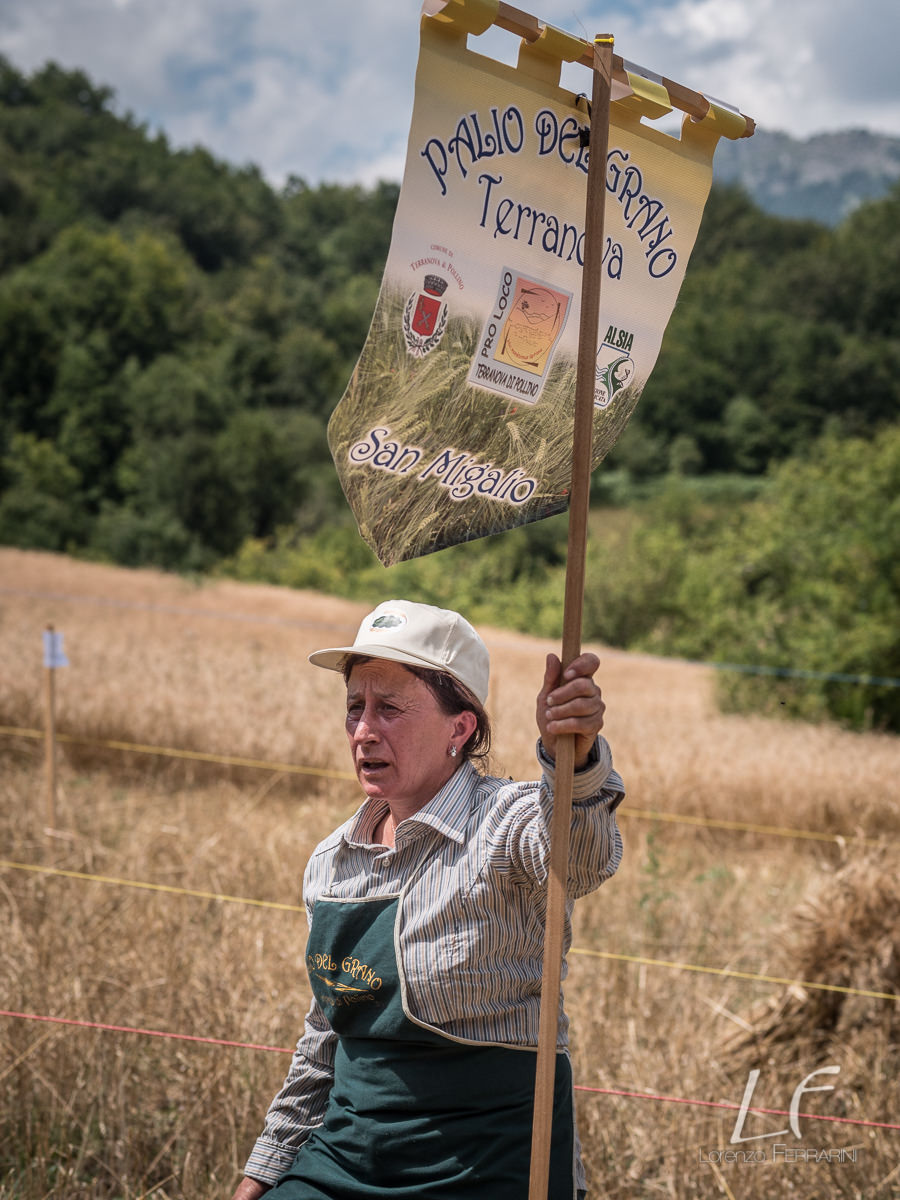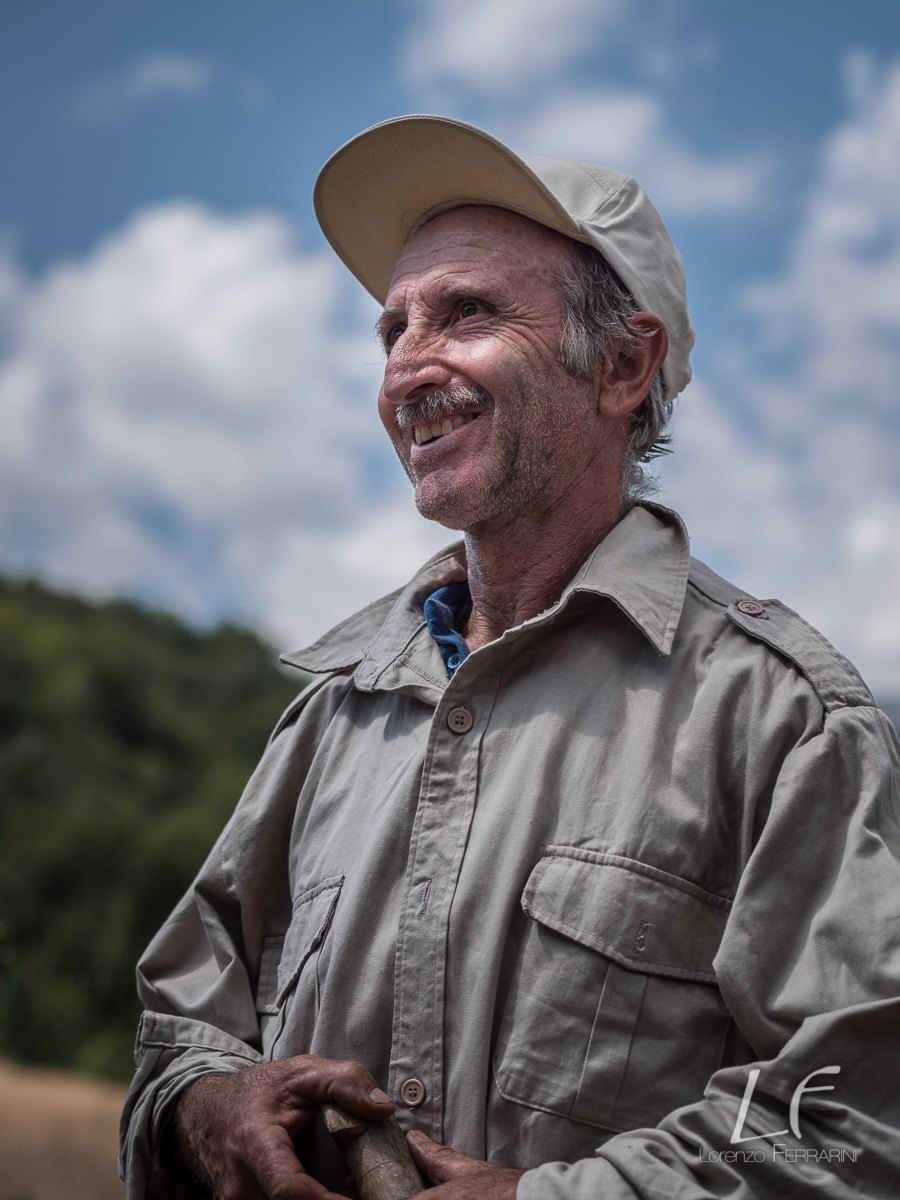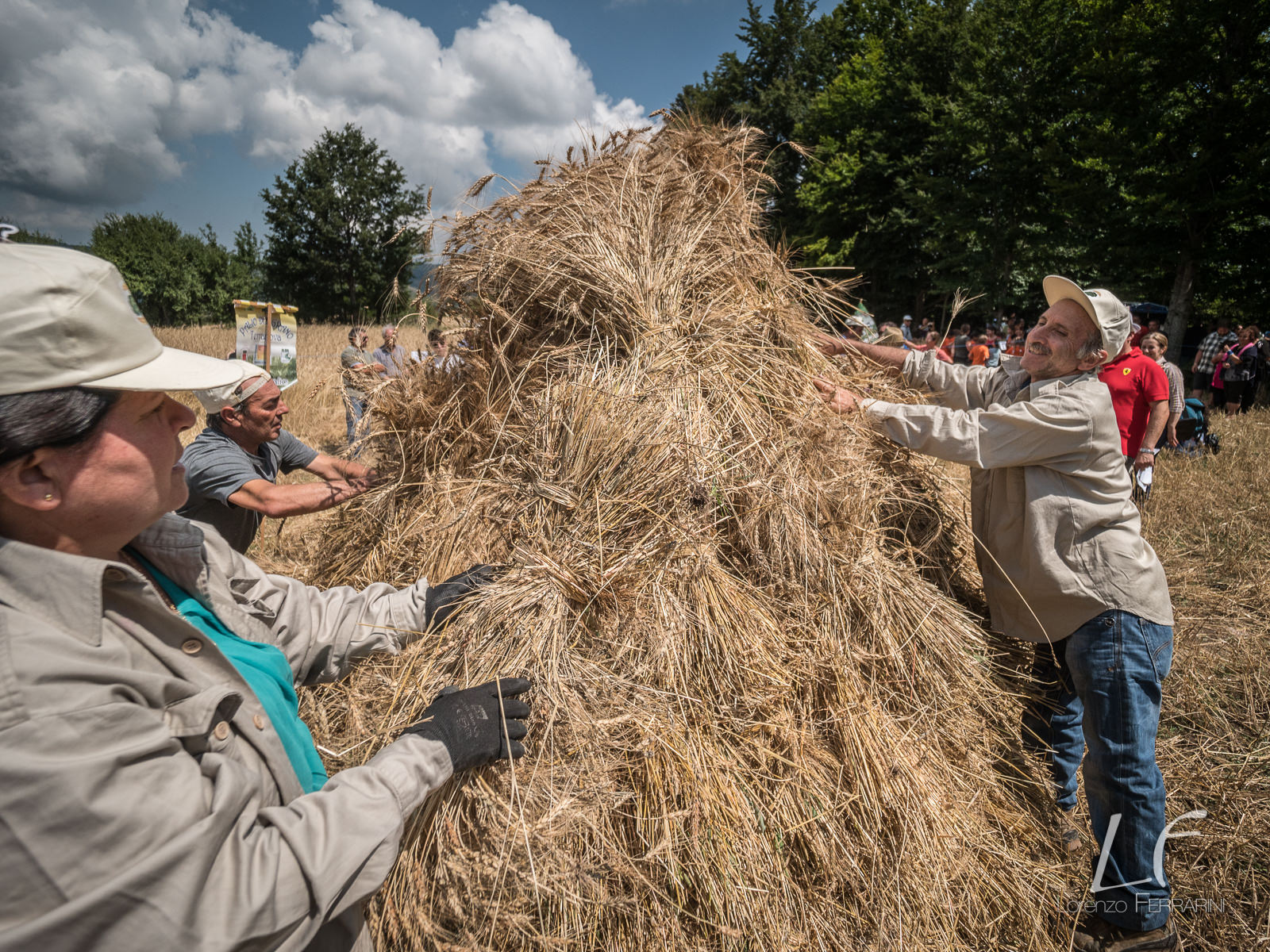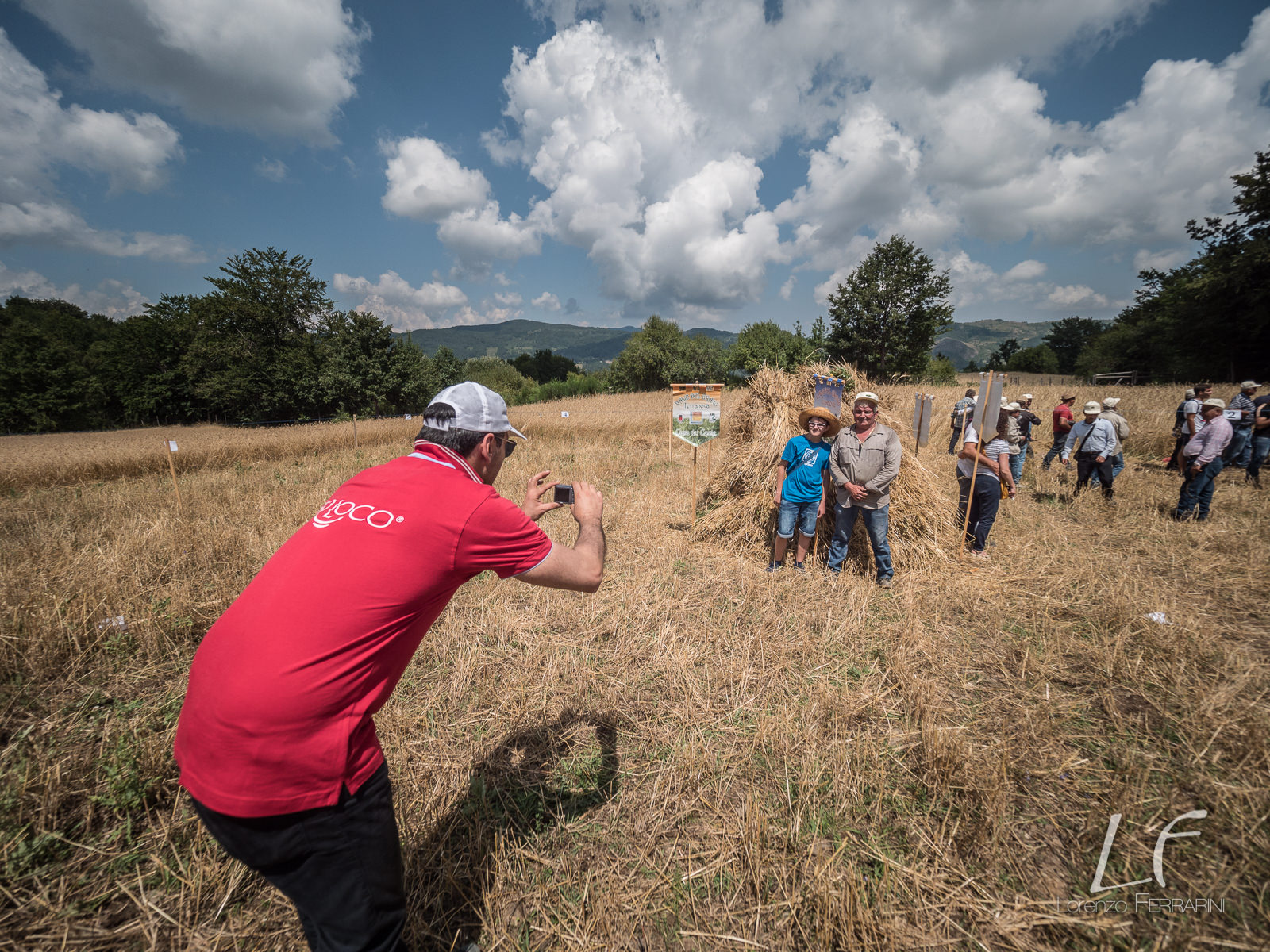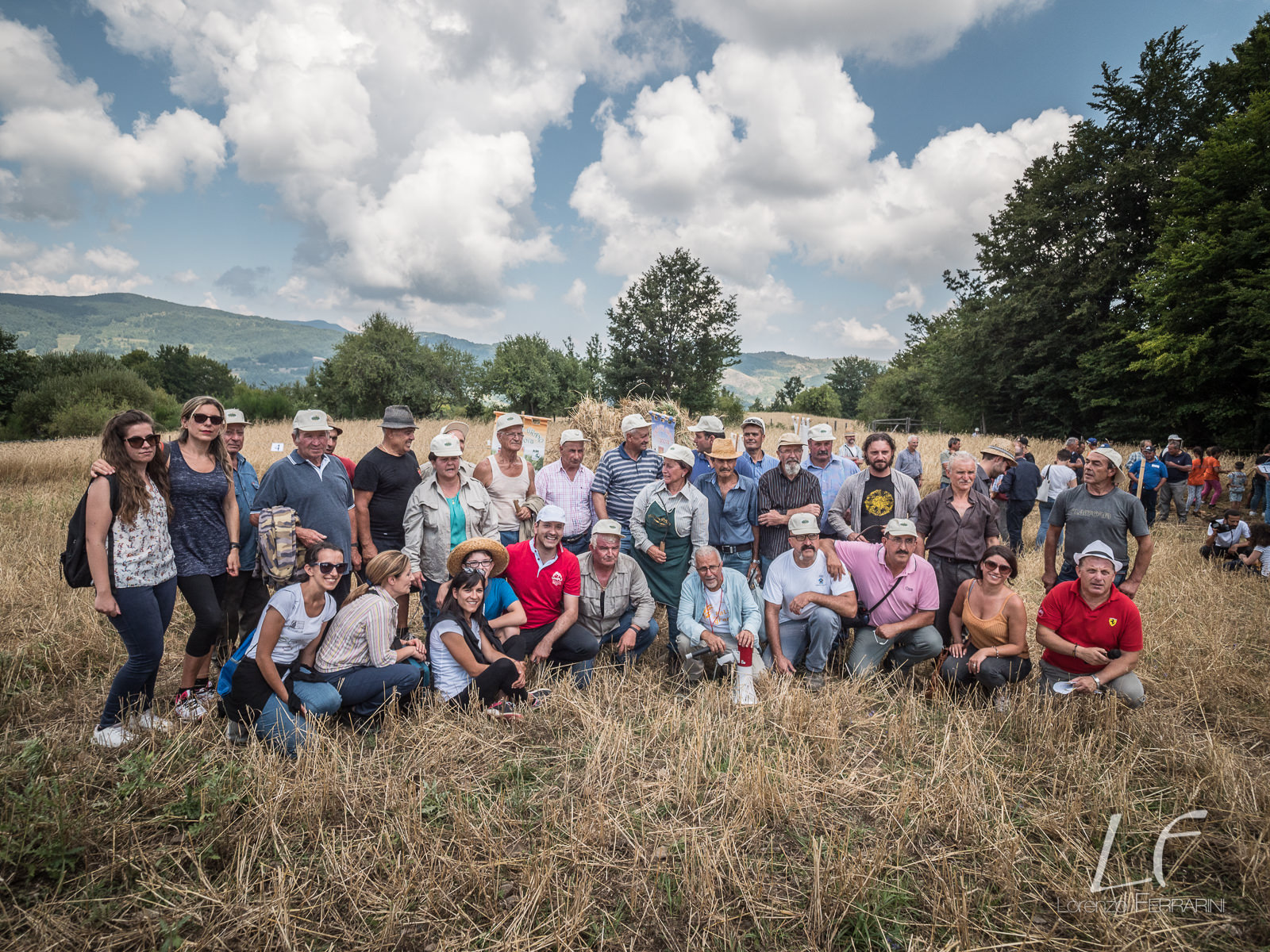Harvest Competition in Terranova di Pollino
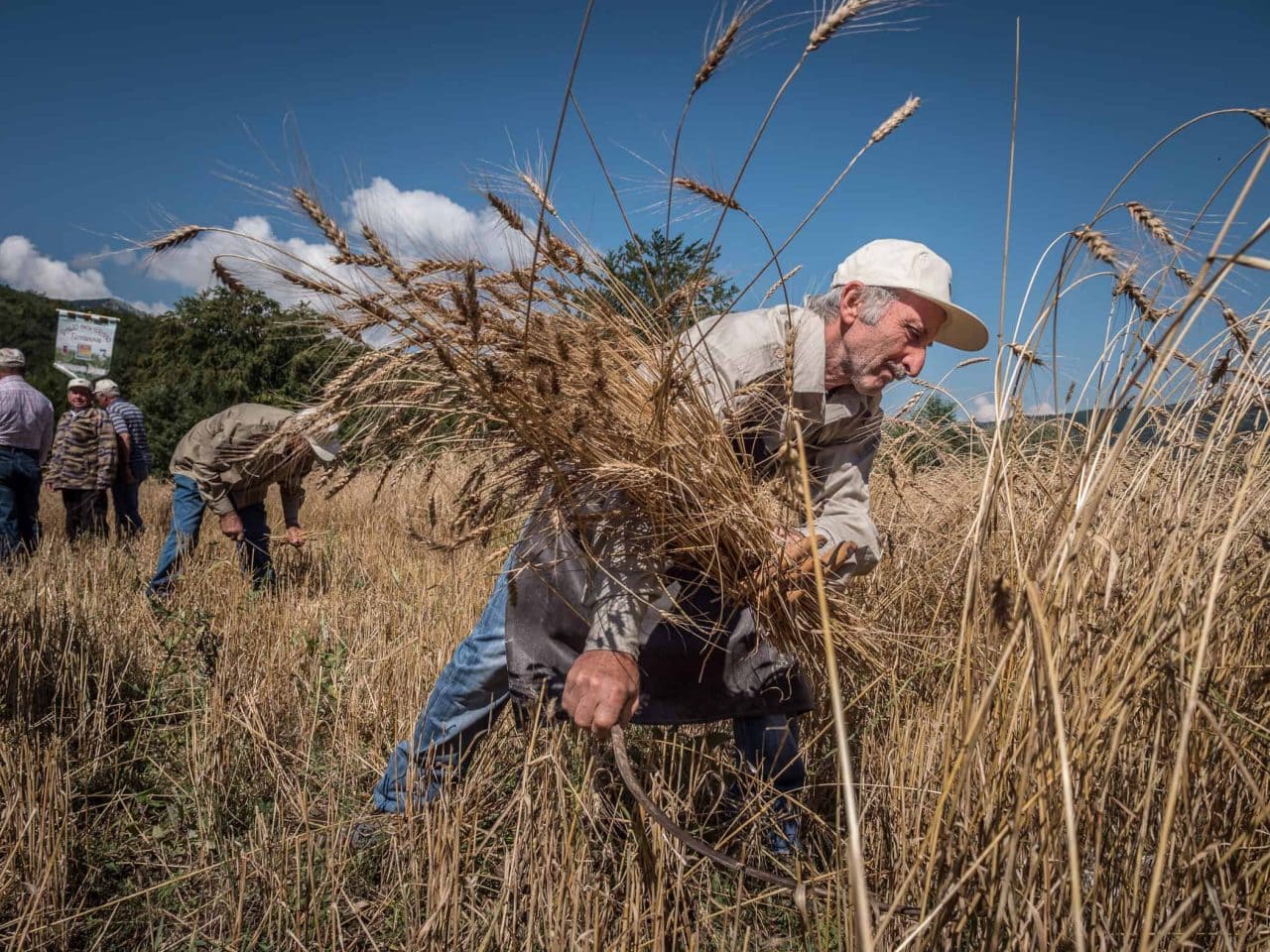
One of the missing pieces from the mosaic I am trying to put together on wheat festivals in Basilicata has to do with production, since in order to make the offerings I photographed at rituals and processions during the past years one needs wheat spikes that are harvested by hand. While wheat is farmed in the area of south-west Basilicata, most fields are harvested with machines. It takes someone who is particularly devoted to a saint or Virgin to spare a portion of a field to dedicate to producing spikes for these offerings. Or, in this case, hand-reaping can be part of a competition organised by a local association promoting tourism and supported by holiday farm La Gravina.
The harvest competition took place in the countryside on the territory of Terranova di Pollino (PZ), up on a mountain field at 1500 metres above sea level. The format was imported from a similar initiative run since 2005 in the neighbouring region Campania, the Palio del Grano of Caselle in Pittari. Teams of reapers from the neighbouring valleys and a home team were assigned a strip of wheat and, kept in check by judges, raced to the end under a searing sun. The winners finished first, and then in true peasant spirit helped the other contestants. There was music all along and a presenter coming through a PA system. The event was fascinating for the way it was a performance of a romanticised past by people who lived it very recently, anachronistic and very modern at the same time. Performances of this kind are more complex than they seem, enacting keywords of intangible heritage and tradition for purposes of commercial or touristic promotion and at the same time involve completely genuine embodied and affective performances of manual labour by local enthusiasts.
The connection with wheat offerings was reinforced by one of the musicians, who took home with him a carload of spikes to make offerings for the procession of the Madonna del Carmine in Pedali di Viggianello. Hand-reaped wheat is hard to come by, these days.
These photographs were made with a Panasonic GH5 and three lenses: Panasonic Lumix G Vario 12-35/2.8 ASPH OIS, Olympus Zuiko ED 7-14/2.8 Pro and Panasonic Leica DG 42.5/1.2 ASPH.


